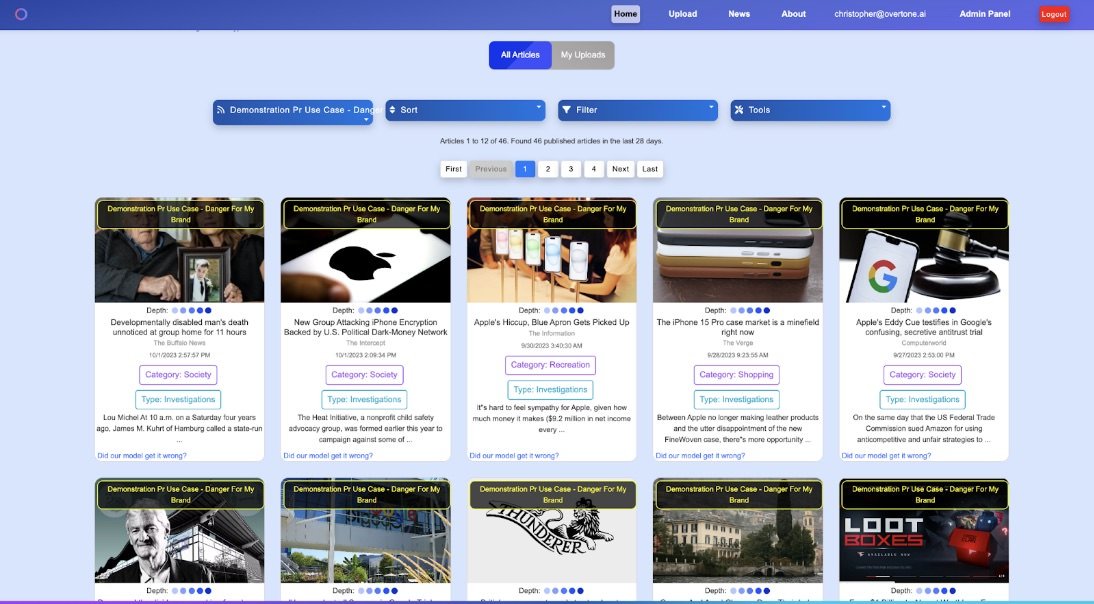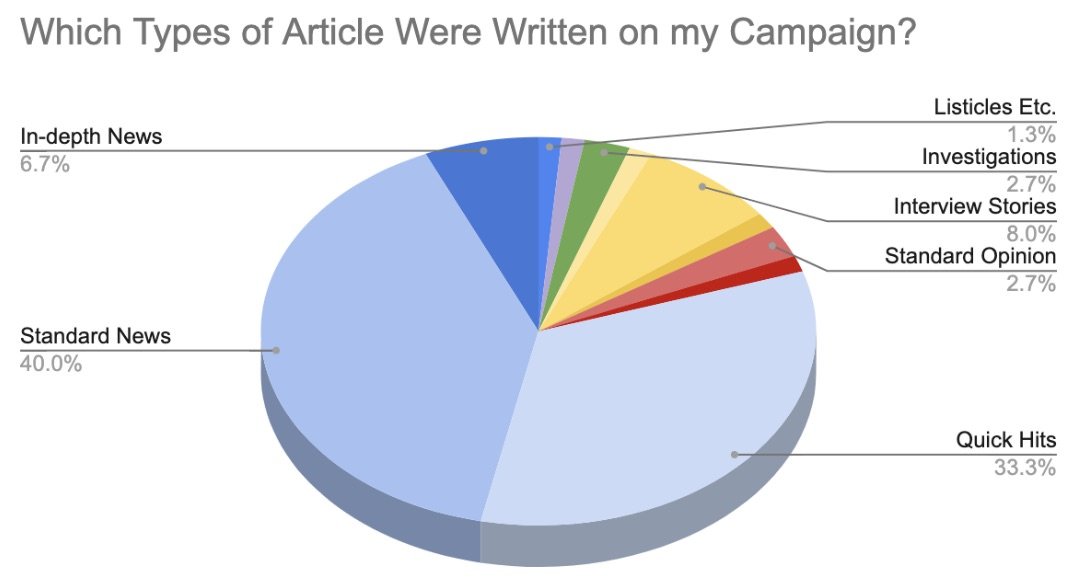This is a chapter from #PRstack: AI tools for marketing, media, and public relations, the latest #FuturePRoof publication. You can buy a copy of the complete book from Amazon in Kindle and print formats. The Kindle version doesn’t include images due to format limitations.
Overtone by Christopher Brennan | Developer
Overtone leverages AI to provide qualitative analysis of media relations coverage by classifying articles into categories such as quick hit or investigation, giving insight into campaign impact and pitch resonance.
Overtone provides qualitative content analytics. This gives insight to coverage reports, using Large Language Models and Natural Language Processing on the text of articles themselves. The tool classifies coverage into editorial categories: feature, investigations, quick hit, or hot take.
How Overtone fits into public relations workflow
The scores are most useful in evaluating a campaign and planning for future ones. It helps teams access and benchmark the type of coverage that past campaigns have received, to understand what will best suit a client going forward. This information then makes it easier for teams to filter through coverage, without having to sift through coverage to find the articles that are going to be most impactful.
Information is available at the article level but also for individual paragraphs, so that you can also see what sort of statements mention a brand or product. This can be particularly helpful for examining pitch efficacy and seeing what sorts of messages from a pitch resonated and were picked up by journalists, and how those journalists relayed the messages.
How to use it
Content can be ingested by Overtone either via body text or URL, with the articles processed instantly and scores returned on the article and paragraph level. There is an API for integration into other workflows automatically, so that the articles from a campaign can be sent in and article types added to an existing spreadsheet or database. However, the scores are also available through a dashboard that is filterable by topics, dates, types and categories of articles. Charts are also automatically generated to map article types to other goals such as social media reach.
Example use cases
Pitch efficacy
A consumer clothing brand has sent out various press releases over the last several months for different campaigns, with different results in terms of the amount and type of coverage for each campaign. The public relations team is tasked with assessing why the releases led to different coverage.
The team sends articles for three campaigns to Overtone’s API to have the content analysed and categorised. They receive the scores and find that for the first campaign, centred on the release of a new headwear product for young adults, more than 70% of the articles written were quick hits about the product release or quick copies of the information in the press release, while 20% were listicles and 10% of the articles were hot takes about the product.
For the second campaign, about the release of a sneaker, more than 80% are Listicles that feature the new sneaker with other products. For the third campaign, about the partnership of the brand with an influencer, the practitioners observes that a quarter of the articles were interviews with the influencer about the brand, which they will want to highlight as proof of their work. An additional quarter of the articles are hot takes about the partnership and the rest of a mix of quick hits and listicles. The AI-generated labels mean that humans do not need to manually label these articles.
Messages about product
In the previous example, the team wants to do a more fine-grained analysis of the messages from the press releases that were transmitted in the coverage. They send the messages from each release to Overtone, which discovers that messaging about the headwear product was presented in an opinionated way, and that the message was repeated most often in that same opinionated way in hot takes. By contrast, the sneaker messaging was presented in a drier, more factual way, which led to the listicles, with teams able to tailor future releases to lead to the preferred content.
Christopher Brennan, co-founder, Overtone
https://www.linkedin.com/in/christopher-brennan-65565950/
Christopher began his career as a reporter with bylines from a dozen countries for outlets such as the BBC, NYDaily News and France 24. After covering tech he has moved to building it, leading the development of language models for news at Overtone.


